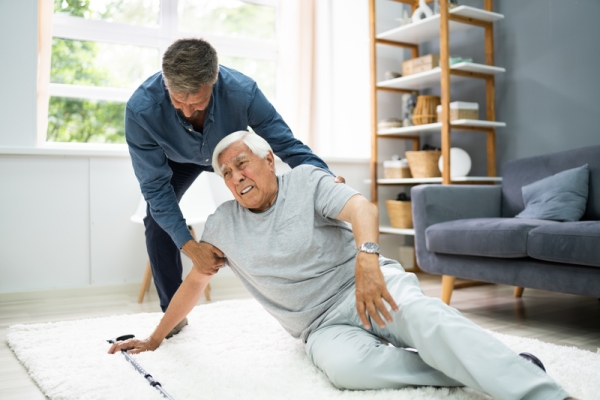Fall Prevention Strategies

Falls are the leading cause of injury among adults 65 and older. However, many falls are preventable with the right strategies and interventions. In the past few weeks The Medical Center has seen an increase in fall-related injuries ranging anywhere from basic wound care to surgical intervention requiring weeks of physical therapy.
Both ORCA Public Safety and The Medical Center are dedicated to helping members improve their safety and well-being. By taking a few proactive steps, you can reduce your risk of falls.
Fall Prevention in the Home
- Remove tripping hazards: Keep hallways and higher-traffic areas clear. Remove decorative throw rugs when possible.
- Be aware of flooring transitions.
- Install grab bars: Adding grab bars in bathrooms, near toilets and in showers can provide essential support.
- Improve lighting: Ensure hallways, staircases and entryways are well-lit. Strategically placed night-lights can be especially helpful.
- Nonslip Rugs and Mats: Use nonslip backing on area rugs and mats to prevent slipping.
- Handrails: Ensure handrails are installed on both sides of staircases and steps for added security.
Staying Active with Exercise
Staying active and exercising is key to maintaining strength, balance and stability:
- A daily walking routine.
- Foot and ankle exercises: Strengthening these muscles can enhance stability.
- Balance and strength exercises: Activities such as Qi gong, Tai Chi, Yoga and resistance training can improve balance and muscle strength.
- Grip Strength: Research shows a correlation between strong grip strength and reduced fall risk. Incorporating exercises that strengthen your hands and forearms can contribute to overall stability.
Health & Balance Awareness
- Vision: Impaired vision can affect balance and your spatial perception.
- Medication: Some medications may cause dizziness or drowsiness.
- Blood Pressure: Sudden drops in blood pressure can lead to lightheadedness. Be mindful when transitioning from lying down, sitting or standing.
- Gait and posture changes: Age-related gait changes, such as not picking up your feet or a stooped posture.
- Canes and Walkers: Proper height and usage instruction is important.
- Footwear: Wear supportive, nonslip footwear.
- Wearable technology: Explore options for wearable technology that alerts others in case of a fall, such as an Apple Watch or monitored medical alert device services.
Adopting a strategy for fall prevention and being aware of your surroundings, both inside and outside the home, can greatly assist in preventing unnecessary accidents.
